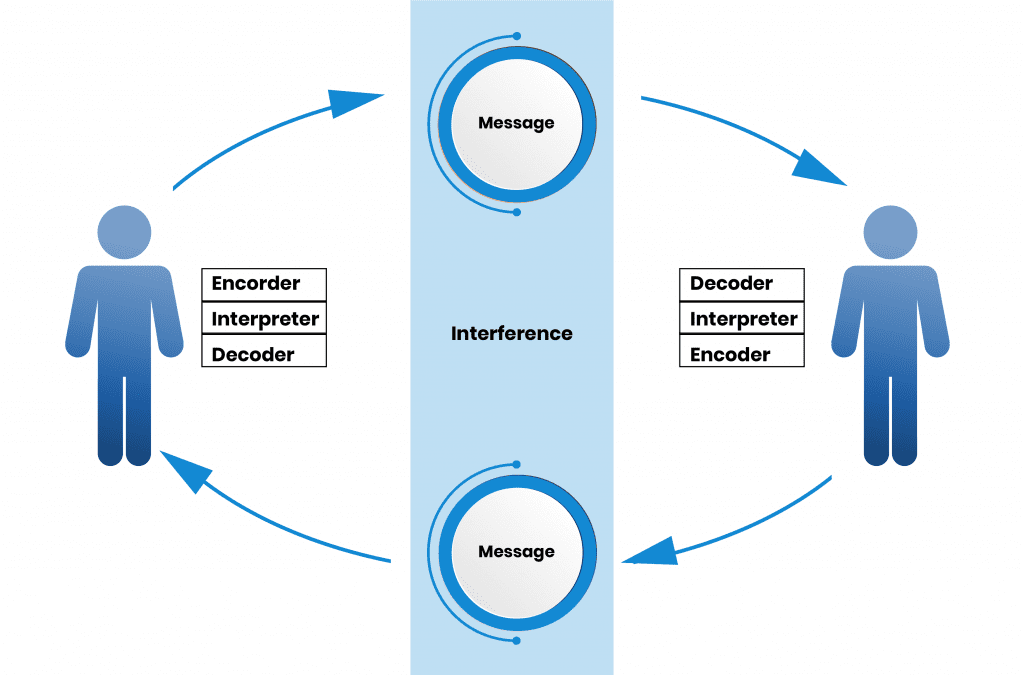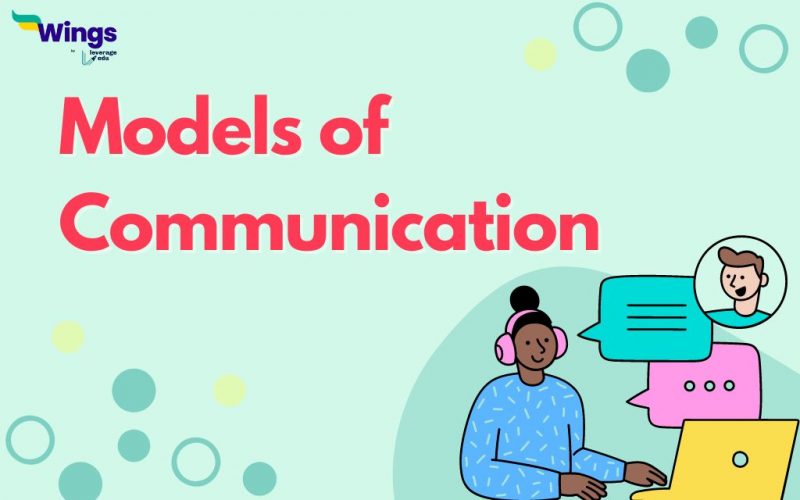Not only at the workplace but communicating effectively in personal life is one of the vital elements to progress. Considering the advancements made in technology, various instruments or gadgets are now available to smoothly converse. But the situation was not the same a few decades ago. At present, the importance of communication is important for an individual to understand, especially, when seeking a job or preparing for exams like IELTS and TOEFL. Every organization demands experts with fluent communication skills who can carry out their businesses efficiently.
Thus, it has become essential to understand the basic models of communication before working on your skills. That is why through this blog we will give you a better understanding of the topic.
This Blog Includes:
What is Communication?

Being one of the most essential elements required to lead a proper professional and personal life, the importance of communication can not be put down into words so easily. To get a hold of what information transmission means today and to understand the models of communication, let us first gain an insight into the three main types of communication:
- Written communication: Letters, e-mails, reports, and memos along with other documents.
- Oral Communication: Either face-to-face or over a phone/video call.
- Non-verbal communication: Using gestures, actions, expressions, body movements, etc.
This is comparatively less popular or in use as compared to the other two but it is an equally important method to communicate. With the help of the infographic given below, we can understand the basic route of communication between a sender and a receiver along with feedback from both of them.

- The sender develops ideas and encodes information.
- The sender selects the medium or a channel to transmit the message.
- The recipient receives the message sent by the sender.
- Then, the receiver decodes or interprets the message.
- The receiver may also provide feedback to the sender, which is the essence of two-way communication.
What are the Elements of Communication?
Communication is nothing but an exchange of thoughts, ideas, views, emotions and expressions from one person or more than one, to get relevant feedback. The different elements of communication include:
- Communicators (sender/receiver) are the participants in communication.
- Message is a single uninterrupted utterance (verbal or non-verbal).
- Code is a system suitable for creating or carrying messages through a specific medium.
- Encode (put into code)
- Decode (take out of code)
- The channel is the specific mechanism used to transmit the message.
- Medium is the form or technology of transmission, that determines the kind of code used.
- Noise is interference with a message.
- An environment is one that surrounds and provides a basis for the meaning of a message.
- Feedback checks the effect of messages.
- Positive Feedback “Keep doing what you’re doing”
- Negative Feeback “Change what you’re doing”
8 Major Models of Communication
There are 8 models of communication that are divided into 3 sub-categories: linear, interactive and transactional.
| Linear Models (One-Directional Communication) | Interactive Models (Two-Way Communication) | Transactional Models (Personal Communication with immediate two-way feedback) |
| Aristotle’s Model | Schramm’s Model | Barnlund’s Transactional Model |
| Lasswell’s Model | Westley and Maclean’s Model | Dance’s Helical Model |
| Shannon-Weaver Model | ||
| Berlo’s Model |
Linear Models of Communication
Linear Models of communications are known to flow in one direction. Let’s take a look at the following sub-categories to build a better understanding.
Aristotle’s Model
According to Aristotle’s model of communication, the speaker plays an important role in transmitting information. Here, the speaker is given the entire charge of communication. He is solely put as the in-charge of communication. He/she has to prepare clear and meaningful content from the message which can reach the listener easily and the listener will respond according to the influence of the message.
Being one of the simplest models of communication, it explains that the entire authority of fluent communication is laid on the sender only. The sender should wisely choose the words for the message depending on the targeted audience. Aristotle also emphasised the importance of maintaining eye contact with the receiver/ audience to ensure the authenticity of the message. Let us understand this through an example:
A politician must understand the importance of addressing the issues in the right way. One should talk about improving the safety of girls, better transportation facilities, the need for more ration shops, etc in order to fetch the maximum amount of votes.
Thus, to create a sound impression, the speech must be in a clear and loud voice avoiding stammering and nervousness.
Lasswell’s Model
The Lasswell Model has a basic framework for communication. It seeks to ask 5 important questions and they are as follows:
- Who said?
- What did they say?
- What was the channel? (TV, radio, blog, gmail etc.)
- To whom did they say it?
- What were the effects?
The model provides a simplistic and practical method of critiquing a message and exploring five important elements that would be helpful in explaining it further.
| Question | Component | How to Analyze | Example of Component |
| Who? | Communicator | Control Analysis | Vacuum cleaner salesman |
| Says What? | Message | Content Analysis | Promotes his brand of vacuum as the best brand |
| In Which Channel? | Medium | Media Analysis | On television |
| To Whom? | Audience | Audience Analysis | To evening TV viewers in the United States |
| With What Effect? | Effect | Effects Analysis | Achieving brand awareness, promoting the belief that this is the best vacuum, leading to increased sales revenue |
The Shannon-Weaver Model
In the year 1948, Claude Shannon presented one of the earliest models of communication which elaborates on how the dissemination of information takes place and also determines what all can go wrong while communicating. Observe the illustration given below:

In this model, the source is an individual who sends a message to another person with the use of a transmitter. Transmitters can be understood as instruments that help us carry out communication. Depending upon the scenarios, they can differ. For instance, in today’s time, major transmitters are phones, computers, and other devices. Also, the signal will vary according to the chosen method of communication.
The box at the bottom i.e., NOISE represents the interference of any signal with the message that is being carried. Again, the intensity and type of interference would depend on the method of communication. In the end, the box representing the receiver is the person or instrument which ultimately receives the message.
Berlo’s Model of Communication
In the famous model of communication by Berlo, the importance of thorough communication is laid on the person sending the message and the receiver. As per the model, to properly decode and encode the message, the communication skills of both, sender and receiver, must be fluent. If both are skilled, communication will be at its best! Let us have a look at the diagram mentioned below to understand the model.

Interactive Models of Communication
Unlike the linear model, the Interactive model of communication requires two people to keep the conversation going.
Schramm’s Model
Out of all the models of communication, Schramm’s model elaborates on the importance of both sender and receiver, turn by turn, in the message. Through the diagram mentioned below, you can understand the circle of communication and how each person is important at their respective places.

Barnlund’s Transactional Model
The Transactional Model put forward by Barnlund explores a kind of communication that is interpersonal and receives immediate feedback. The approach is that the feedback for the sender is the reply for the receiver. The role of ‘cues’ is also highlighted as impacting the messages. Following are the two cues that have been put forward:
- Public Cues: These are environmental cues.
- Private Cues: These are a person’s thoughts and background.
With these cues, the model introduces things that would influence what is thought and said.
Dance’s Helical Model
This model builds on the circular models and explains how messages are improved with time by using feedback. When we are communicating with someone, their feedback influences our next statement. With each cycle of communication, our pool of knowledge grows wider or we ‘expand our circle’ which is represented in the figure below. The upward movement of the spiral shows a new cycle of communication that is independent of the previous one.

Westley and Maclean Model
The model highlights how our communication is affected by environmental, cultural and personal factors. The importance of feedback is emphasized. Who we are, what is our background, our perspectives, etc. influence what we say. The ‘object of orientation’ is taken into account at all points in time.
FAQs
Ans. There are 8 models of communication that are divided into 3 sub-categories: linear, interactive and transactional.
Asn. The Lasswell Model has a basic framework for communication. It seeks to ask 5 important questions such as Who said? What did they say? What was the channel? (TV, radio, blog, etc.)
Whom did they say it to? and What were the effects?
Ans. Schramm’s model elaborates on the importance of both sender and receiver, turn by turn, in the message.
Thus, we hope that this blog on models of communication has equipped you with some valuable information. Amid the coronavirus pandemic, getting confused about the admission process is inevitable. But don’t worry! Reach out to our experts at Leverage Edu through e-meetings and they will help you get directed on the right career track!

 One app for all your study abroad needs
One app for all your study abroad needs





















 45,000+ students realised their study abroad dream with us. Take the first step today.
45,000+ students realised their study abroad dream with us. Take the first step today.

